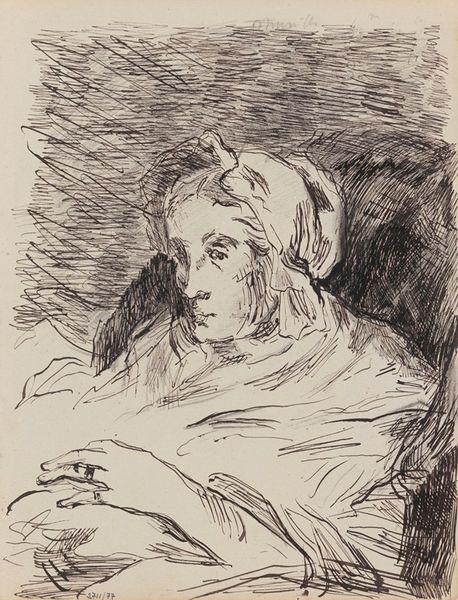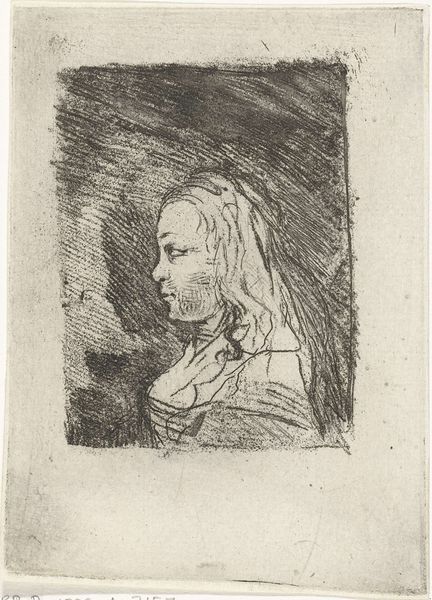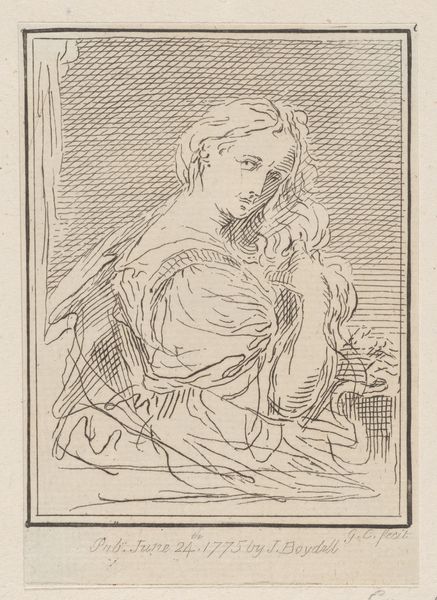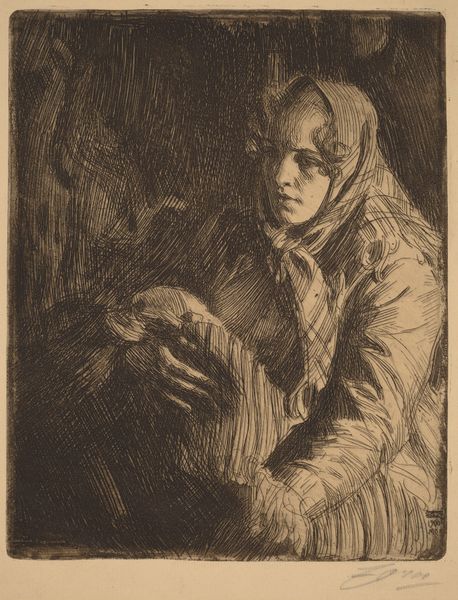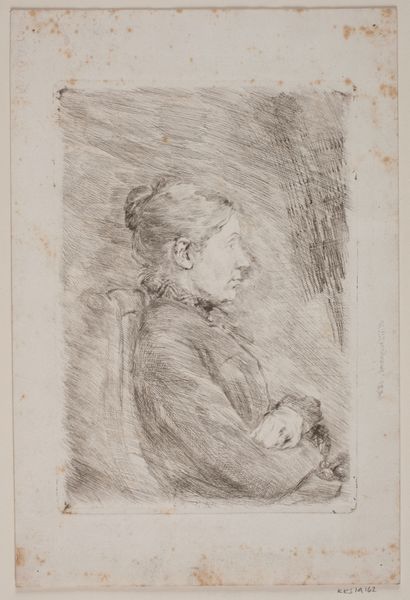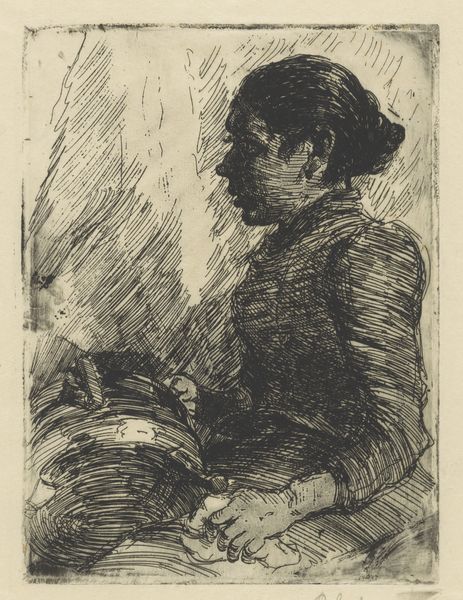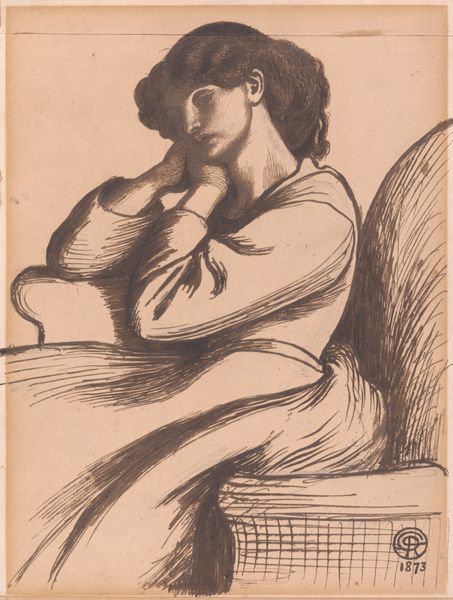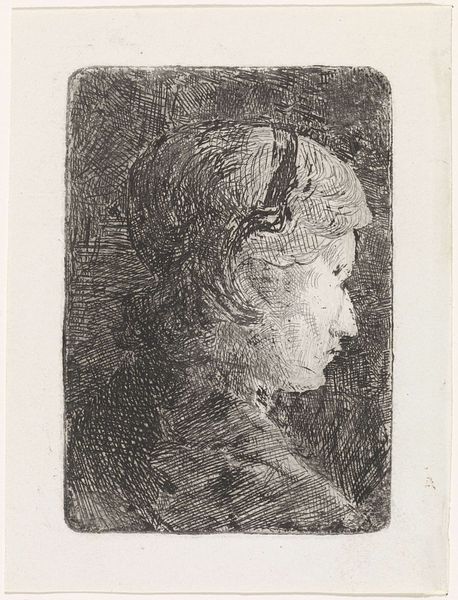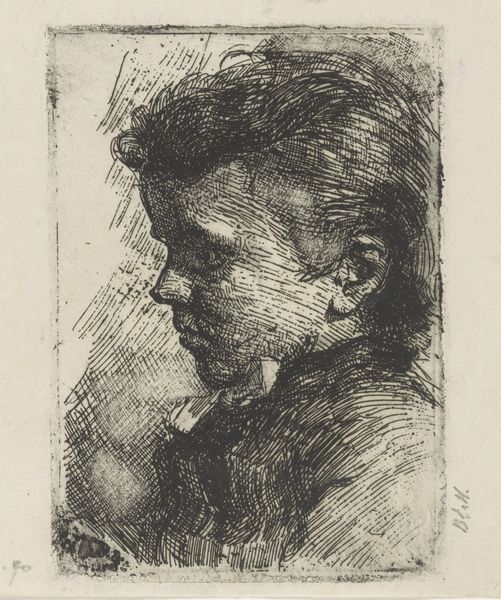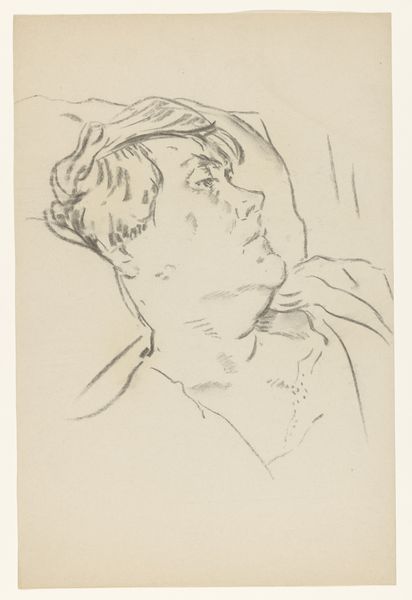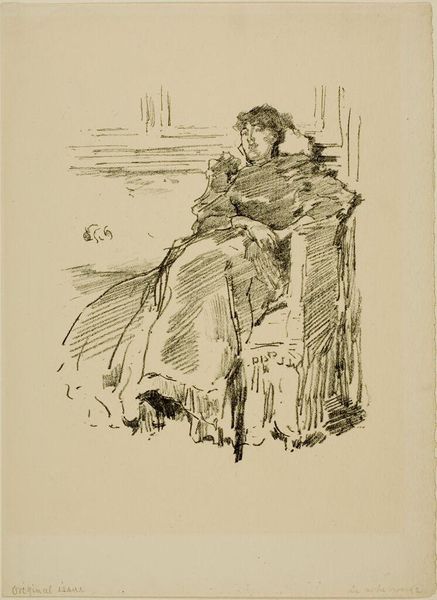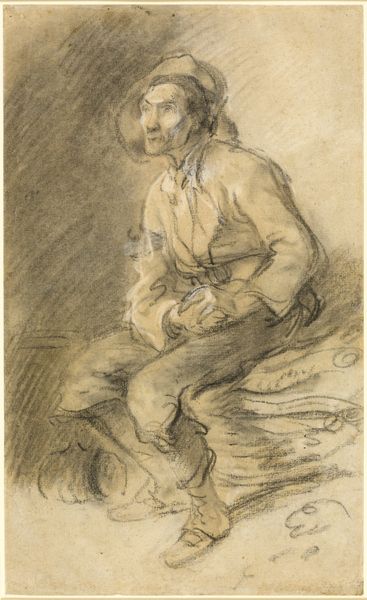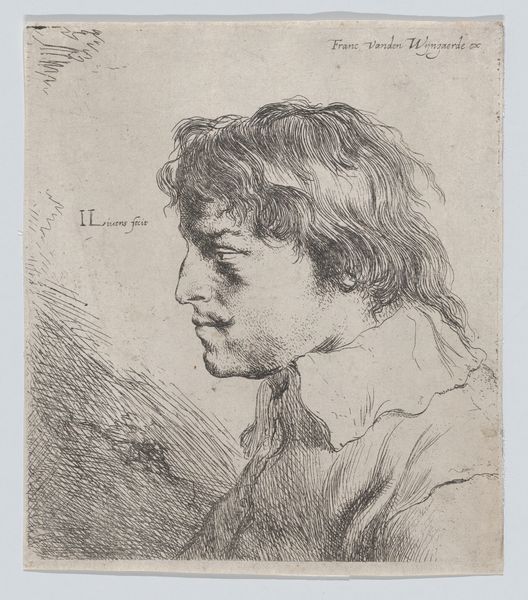
drawing, print
#
portrait
#
drawing
# print
#
impressionism
Dimensions: plate: 5 x 3 15/16in. (12.7 x 10cm) sheet: 9 5/8 x 6 1/8in. (24.4 x 15.6cm)
Copyright: Public Domain
Editor: Here we have Edouard Manet's print, "The Convalescent (Suzanne Manet)," created between 1879 and 1881. It's a delicate portrait; you can almost feel the stillness. What catches your eye about it? Curator: Well, focusing on the printmaking process itself is revealing. Notice the dense hatching – the labor involved to create that tone and shadow is considerable. Consider, too, the societal expectations around women, domesticity, and illness, and how printmaking allowed for wider, and often cheaper distribution compared to painting. It’s not just a portrait, it's an artifact embedded in a network of production, labor, and distribution. Editor: That’s a really interesting perspective. So you're saying the very *act* of making and distributing a print like this – rather than, say, a painting – is significant in terms of class and access? Curator: Exactly. Manet chose this medium. He reproduced this image; what does this choice suggest to you about access, the intended audience and its purchasing power? This was a period with massive growth in periodicals and printed materials. Etchings like these were cheaper than oil paintings and the act of replicating implies a need for broad availability, democratizing images and themes once exclusive to the bourgeois. Editor: It makes me think about how many copies might have been made, who purchased them, and where they were displayed – factors that speak to class and access in that period. So it’s more than just an image of a woman recovering, it’s an item for trade and consumption. Curator: Precisely. Considering the socio-economic implications adds another layer of meaning. Editor: I hadn’t thought about it that way, it’s fascinating! Seeing art through that lens is a fresh perspective.
Comments
No comments
Be the first to comment and join the conversation on the ultimate creative platform.

